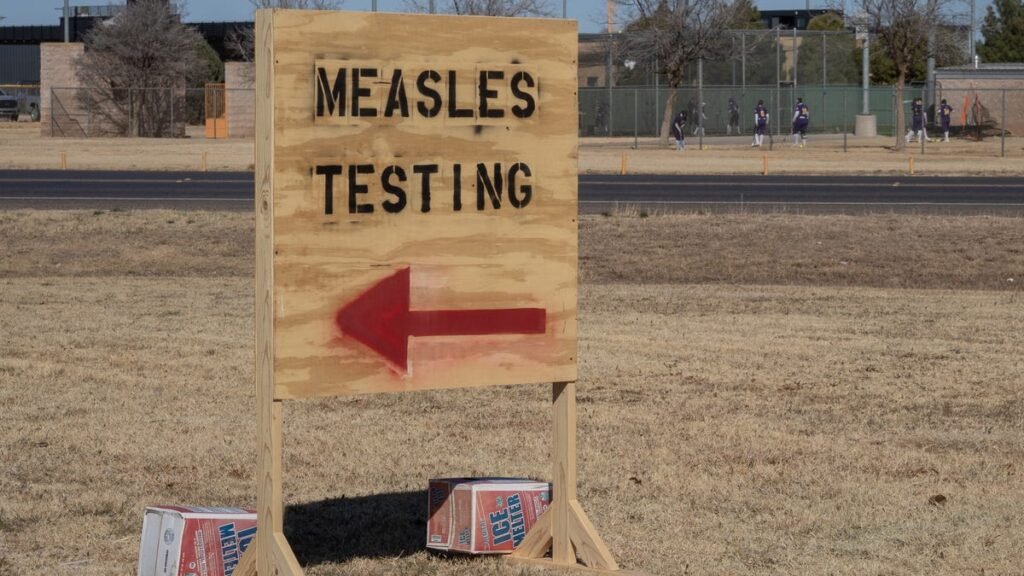Measles Cases Reach Unprecedented Levels in the U.S.
The United States is grappling with a significant rise in measles infections, reaching over 1,500 cases as of September 24. This surge marks the highest level observed since the disease was declared eradicated back in 2000. The bulk of the reported cases is emerging from areas in Utah and Arizona, according to health officials.
Specifically, the Centers for Disease Control and Prevention (CDC) has confirmed a total of 1,514 cases nationwide. While many of these outbreaks are linked to events in West Texas, smaller clusters are cropping up due to community interactions and travel in other states.
In Utah, the situation has become increasingly concerning, with 42 confirmed cases reported mostly in the southwestern region bordering Arizona. Meanwhile, Arizona has seen 52 cases, with a staggering 48 of those in Mojave County, a more isolated part of the state.
“We are hoping to see fewer measles cases here as the situation unfolds,” commented the Utah Department of Health and Human Services. They emphasized that vaccinations remain the most effective way to combat the disease.
Interestingly, measles is a vaccine-preventable illness that had seen no domestic outbreaks as of 2000, with new cases originating only from outside the U.S. However, increasing numbers of parents opting out of vaccinations for their children have contributed to a decline in immunization rates, which in turn has led to more cases appearing across multiple states.
Outbreak Origins
The recent outbreak in Arizona can be traced back to the vicinity of Colorado City in Mojave County. This town is often noted for its unique cultural practices. Reports indicate that the number of cases has surged more than fourfold in just a month. Before the current spike, Arizona hadn’t recorded more than 46 cases in a single year since 1991.
Back in August, public health officials warned that potential exposure risks existed in both Utah and Arizona during early August. The health department advised community members in Colorado City and surrounding areas to remain vigilant as the disease is “still active” in the community.
The Utah Department of Health mentioned that individuals who had contracted measles traveled through southwestern Utah in June and visited public venues, raising alarms about the ongoing spread. Recent exposure locations include local festivals, high school events, and restaurants.
CDC Reports on National Infection Rates
Out of the confirmed cases, the CDC notes that 1,493 of these instances came from 41 states, while 21 were linked to international visitors. The last time cases approached this level was in 2019 when 1,274 cases were identified nationwide.
Throughout 2025, a total of 40 outbreaks have been reported, with a significant percentage of cases—86%—traced back to these outbreaks, defined as having three or more related infections.
Among the infected population, 27% are children under the age of five, and nearly 39% fall between ages five and 19. Unfortunately, some cases have resulted in hospitalization, indicating the severity of this outbreak.
Interestingly, the CDC highlighted that about 92% of those infected had not been vaccinated or had an unknown vaccination status. The outbreaks in West Texas have sadly resulted in three confirmed deaths, including two children.
Understanding Measles Transmission and Prevention
Measles spreads remarkably easily; it can be transmitted through breathing contaminated air or direct contact with infected individuals. Symptoms typically arise within 7 to 14 days and include high fever, cough, runny nose, and watery eyes. A rash usually follows after a few days of initial symptoms.
Complications from measles can be severe, leading to conditions like pneumonia, blindness, and even serious neurological issues. Pregnant women who are unvaccinated face risks such as premature births or low birth weight.
Health experts stress that vaccination is the best defense, with the MMR vaccine being particularly effective. Two doses can offer a 97% protection rate, and children are usually vaccinated at 12–15 months and again at ages 4–6.
Adults born before 1957 are typically presumed to be immune due to likely exposure during childhood.







